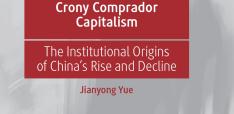Post-2015 Consensus: Universal Education
This post introduces the initial outputs from the Copenhagen Consensus Center’s Post-2015 Consensus project. The project's future outputs will be serialised on Global Policy.
Universal education is a noble goal which has proved impossible to achieve so far. Since 1961’s UNESCO ambition of achieving 100% primary enrolment by 1980 (from a then baseline of 40%), a series of goals has been missed and simply reformulated with a later target date. The post-2015 proposals follow the trend by pushing targets forward to 2030, while 60 million children remain out of school.
Something isn’t working, but the prescription is often just more of the same: more money to fix the problem but with too little consideration about how best to spend it. Abandoning the unachievable target of universal education may be difficult for idealists to accept, but first targeting those who can really benefit will be better for both individuals and society.
Rather than simply sticking to a failed utopian vision, it is time for the international community to prioritise targets and focus limited resources on the most cost-effective. This is the message in a paper by George Psacharopoulos, formerly of London School of Economics and the World Bank, the first in a set of papers commissioned by the Copenhagen Consensus Center’s Post-2015 Consensus project.
Psacharopoulos points out we need to look at what works best first; primary and pre-school education. When setting priorities, there are several reasons why it is best to focus on early years’ education. Children are highly receptive to knowledge when young, there is generally no cultural barrier to education of girls and young children can contribute relatively little in terms of labor. In simple terms, starting early gives young children a head start for continued learning; it is also cheaper to deliver early years’ education.
Based on the most extensive data collected, Psacharopoulos shows that the best target is likely to be: “Increase the preschool enrollment ratio in Sub-Saharan Africa from the present 18% to 59%” which returns 33 dollars for every dollar spent.
While this sounds like a rather modest target, it focusses resources where they can do most good and, unlike the failed goals of previous decades, is realistic and achievable. Sub-Saharan Africa is where the greatest problems lie and where the most can be achieved. Early years’ education gives children a head start in life, improves their life-long earning power and has wider societal benefits not captured in the estimated benefit-cost ratio.
If the world’s poorest are to be helped the most, tough choices have to be made between competing goals. In an ideal world, universal, high quality secondary education would be an excellent goal, but first the urgent problem of basic level education in the world’s most deprived regions has to be addressed. This way, we have the best hope of doing the most good with limited resources over the next 15 years.
"Perhaps, should “Education for All” be replaced by “Education for Some”, i.e., the most needy? But such mundane term would never fly in international parlance." - George Psacharopoulos
You can read the full set of reports at www.post2015consensus.com/education. Here, Copenhagen Consensus Center has just released its latest research series on Education targets for the Post-2015 agenda. George Psacharopoulos, formerly of the London School of Economics and the World Bank writes the main report, peer-reviewed in perspective papers by Paul Glewwe and Caroline Krafft of the University of Minnesota, Department of Economics, and by Peter Orazem of the Economics Department at Iowa State University. Additionally, NGOs and stakeholders such as Education International, Save the Children, and UNICEF present viewpoint papers concerning Psacharopoulos’ analysis.


